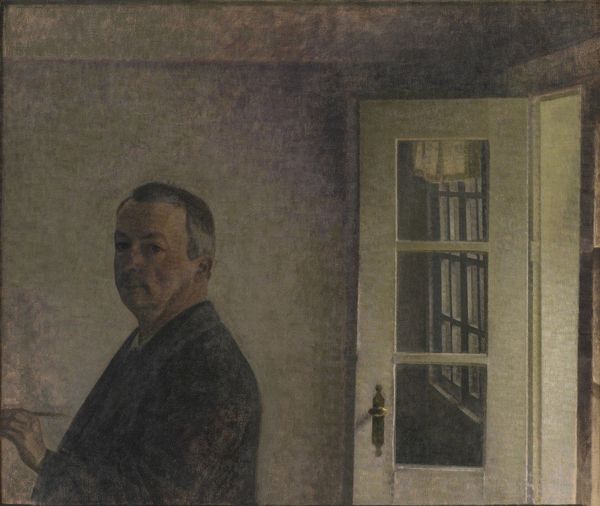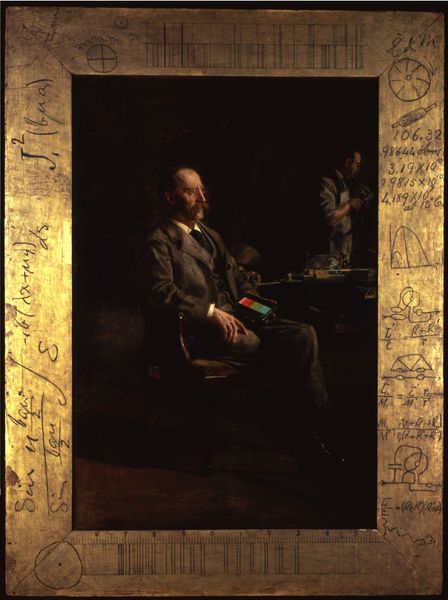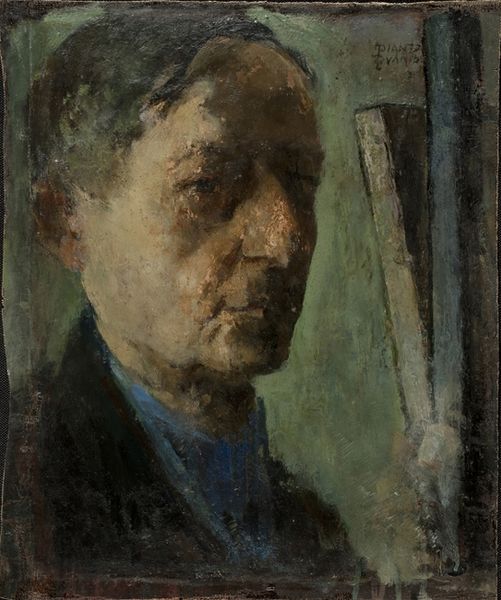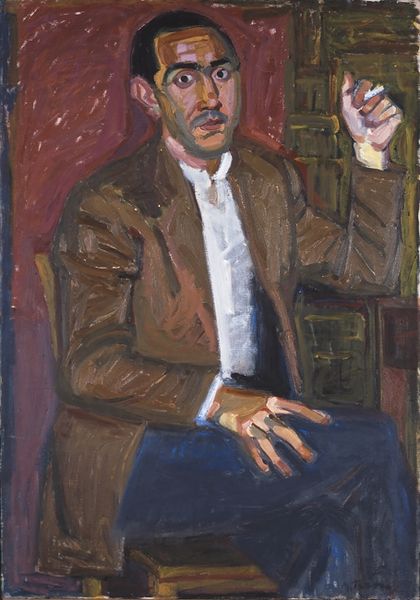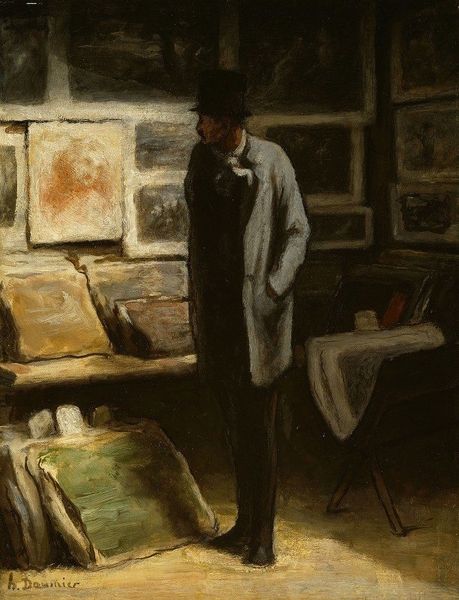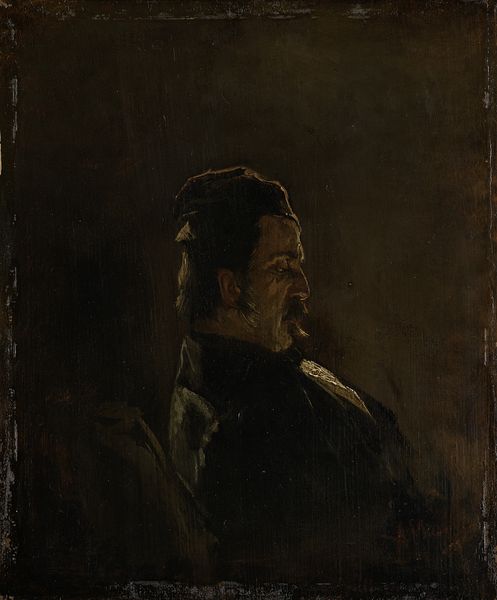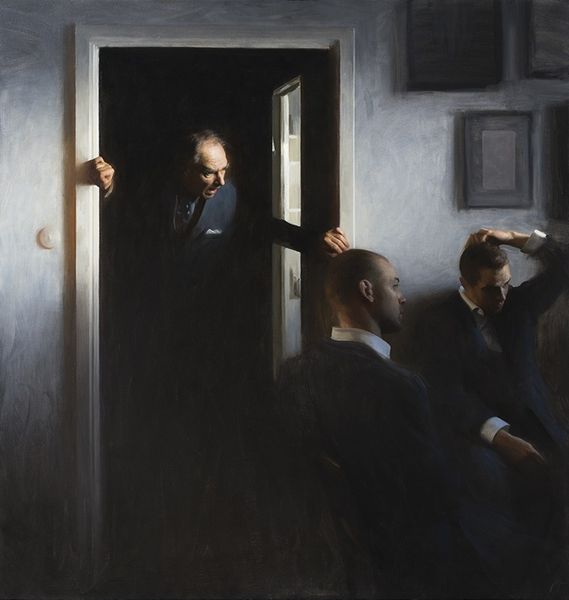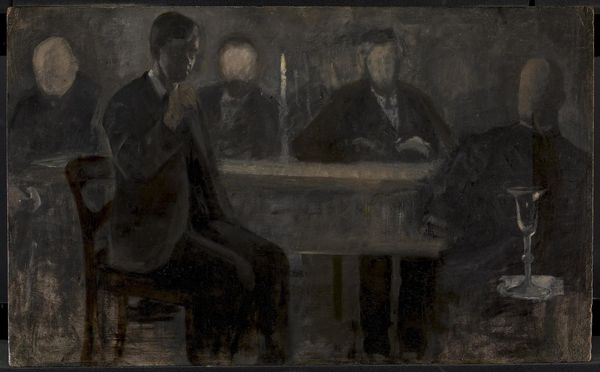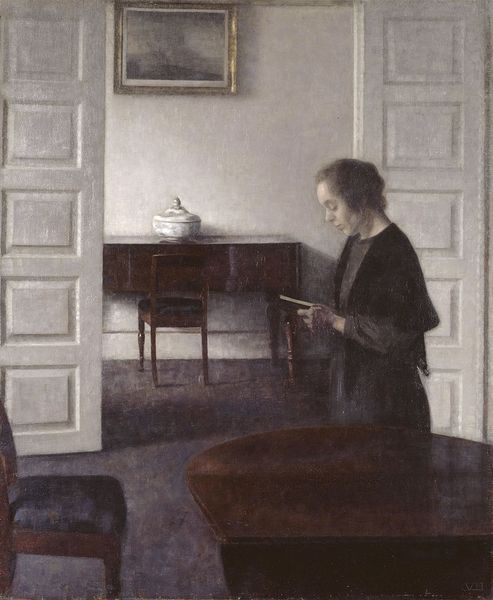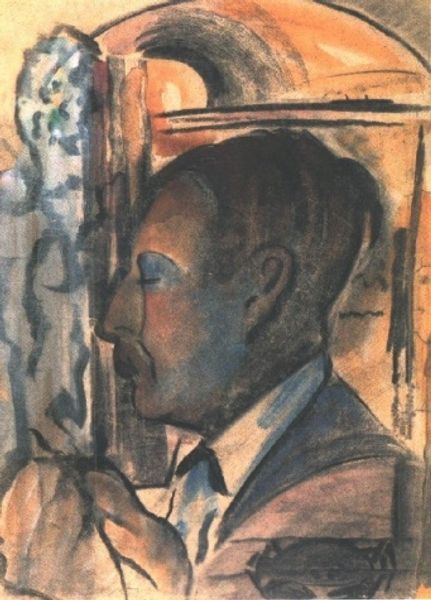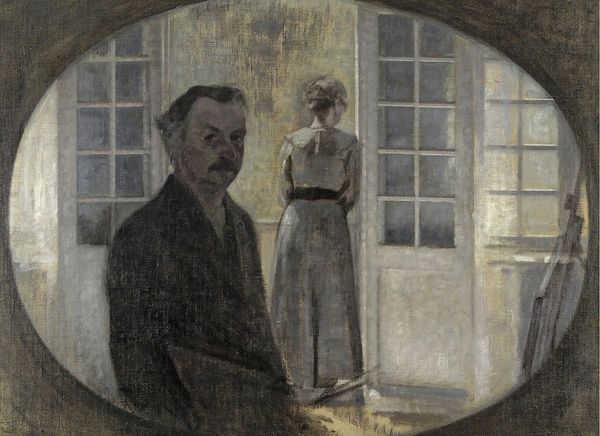
Dimensions: 35 1/2 × 39 3/8 in. (90 × 100 cm)
Copyright: Public Domain
Editor: So, this is Vilhelm Hammershøi's "Self-Portrait at Spurveskjul," painted in 1911. It’s an oil painting, currently residing at the Met. The subdued palette really strikes me, and creates such a contemplative, almost haunting mood. What do you see in this piece, particularly in the context of Hammershøi's other works? Curator: The emotional restraint is key here. Notice how Hammershøi, true to symbolist roots, strips away any obvious indicators of identity or narrative. What remains is a focus on form, light, and above all, the void. Consider that doorway; what do you think it represents psychologically? Is it escape, confinement, or merely an architectural detail? Editor: It’s interesting you call it a void, because I initially saw the doorway as offering a kind of pathway or option. Maybe that's too literal though? Curator: Not necessarily! Consider the enduring symbolism of doorways across cultures and mythologies - thresholds, transitions, passages between states of being. The ambiguity *is* the message, urging us to project our own experiences onto the image. And notice the subtle rendering of light and shadow—does it comfort, or deepen the sense of unease? Editor: It deepens it for me, definitely! It makes me think about liminal spaces and that unsettling feeling of being in-between places or states. Thanks, I never thought about doorways so symbolically before! Curator: Precisely! And by extension, consider how this visual vocabulary - the artist's pose, the closed-off interiors, the veiled light - serves to reveal layers of inner experience, not just of Hammershøi, but ourselves too. Editor: That’s fascinating; it really changes how I see the painting now. Thanks!
Comments
No comments
Be the first to comment and join the conversation on the ultimate creative platform.
